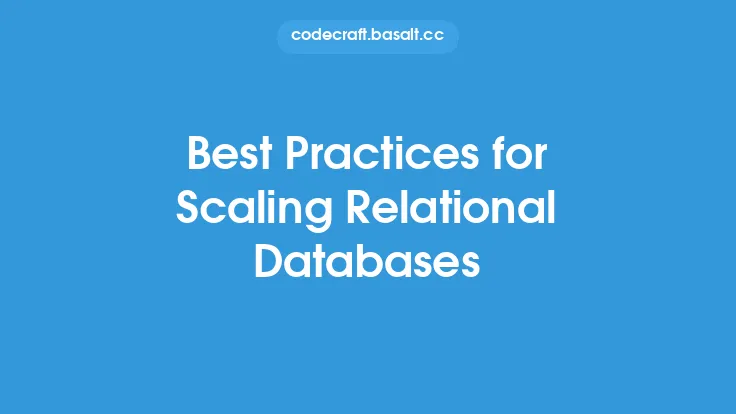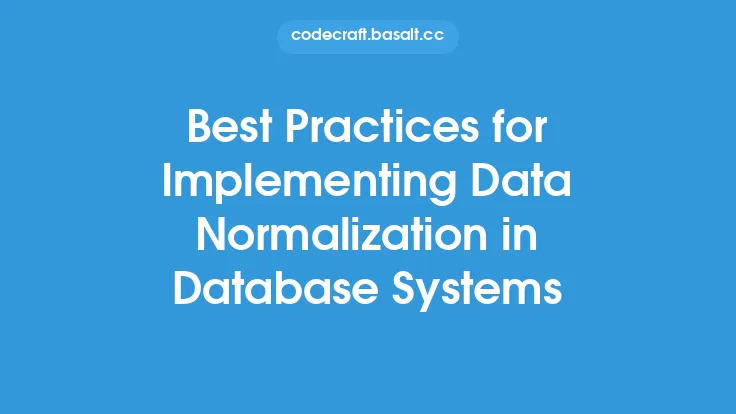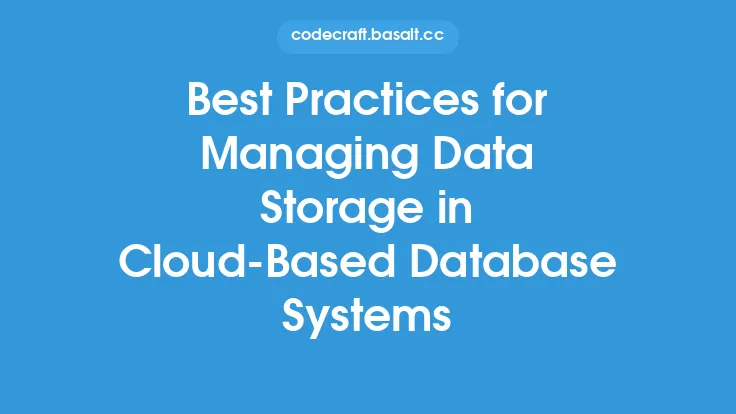Database connection pooling is a technique used to improve the performance and scalability of applications that interact with databases. It involves creating a pool of database connections that can be reused by multiple requests, rather than creating a new connection for each request. This approach can significantly reduce the overhead associated with creating and closing database connections, resulting in faster response times and improved overall system performance.
Introduction to Database Connection Pooling
Database connection pooling is a widely adopted technique in the software industry, and it's supported by most programming languages and frameworks. The basic idea behind connection pooling is to create a pool of database connections that can be reused by multiple requests. When an application needs to interact with a database, it requests a connection from the pool. If a connection is available, it's returned to the application, and the application can use it to execute queries. If no connections are available, the application must wait until a connection becomes available or a new connection is created.
Benefits of Database Connection Pooling
Database connection pooling offers several benefits, including improved performance, scalability, and reliability. By reusing existing connections, applications can reduce the overhead associated with creating and closing connections, resulting in faster response times. Connection pooling also helps to improve scalability by allowing multiple requests to share the same connection, reducing the number of connections required to support a large number of users. Additionally, connection pooling can help to improve reliability by reducing the likelihood of connection-related errors, such as connection timeouts and failures.
How Database Connection Pooling Works
Database connection pooling typically involves the following components:
- Connection pool: This is the pool of database connections that are managed by the connection pooling mechanism.
- Connection factory: This is the component responsible for creating new connections and adding them to the pool.
- Connection manager: This is the component responsible for managing the connections in the pool, including checking out connections to applications and checking in connections when they're no longer needed.
- Application: This is the component that requests connections from the pool and uses them to interact with the database.
Best Practices for Implementing Database Connection Pooling
To get the most out of database connection pooling, it's essential to follow best practices when implementing and configuring connection pooling. Some of these best practices include:
- Configuring the optimal pool size: The pool size should be large enough to support the expected number of concurrent requests, but not so large that it wastes resources.
- Implementing connection validation: Connections should be validated before they're returned to the application to ensure they're still valid and usable.
- Using connection timeouts: Connection timeouts should be used to prevent applications from waiting indefinitely for a connection to become available.
- Monitoring pool performance: The performance of the connection pool should be monitored regularly to identify any issues or bottlenecks.
Configuring Database Connection Pooling
Configuring database connection pooling involves setting various parameters, such as the pool size, connection timeout, and validation query. The optimal configuration will depend on the specific requirements of the application and the database. Some common configuration parameters include:
- Initial size: This is the initial number of connections created in the pool when it's started.
- Maximum size: This is the maximum number of connections allowed in the pool.
- Minimum size: This is the minimum number of connections allowed in the pool.
- Connection timeout: This is the amount of time an application will wait for a connection to become available before timing out.
- Validation query: This is the query used to validate connections before they're returned to the application.
Common Database Connection Pooling Algorithms
There are several algorithms used in database connection pooling, including:
- First-in, first-out (FIFO): This algorithm returns the connection that has been in the pool the longest.
- Last-in, first-out (LIFO): This algorithm returns the connection that was added to the pool most recently.
- Random: This algorithm returns a random connection from the pool.
- Priority-based: This algorithm returns connections based on a priority scheme, such as the connection with the shortest idle time.
Database Connection Pooling in Different Programming Languages
Database connection pooling is supported by most programming languages, including Java, .NET, Python, and Ruby. Each language has its own connection pooling mechanism, and the configuration and implementation details may vary. For example:
- In Java, connection pooling is supported by the JDBC API, and popular connection pooling libraries include Apache DBCP and C3P0.
- In .NET, connection pooling is supported by the ADO.NET API, and popular connection pooling libraries include Microsoft Enterprise Library and NHibernate.
- In Python, connection pooling is supported by libraries such as psycopg2 and mysql-connector-python.
- In Ruby, connection pooling is supported by libraries such as mysql2 and pg.
Challenges and Limitations of Database Connection Pooling
While database connection pooling offers several benefits, it also presents some challenges and limitations. Some of these challenges include:
- Connection overhead: Creating and closing connections can still be expensive, even with connection pooling.
- Connection leaks: Connections can leak if they're not properly closed, leading to resource waste and performance issues.
- Deadlocks: Connection pooling can lead to deadlocks if multiple applications are competing for the same connections.
- Configuration complexity: Configuring connection pooling can be complex, especially in large-scale systems.
Conclusion
Database connection pooling is a powerful technique for improving the performance and scalability of applications that interact with databases. By reusing existing connections, applications can reduce the overhead associated with creating and closing connections, resulting in faster response times and improved overall system performance. To get the most out of database connection pooling, it's essential to follow best practices when implementing and configuring connection pooling, and to monitor pool performance regularly to identify any issues or bottlenecks.





